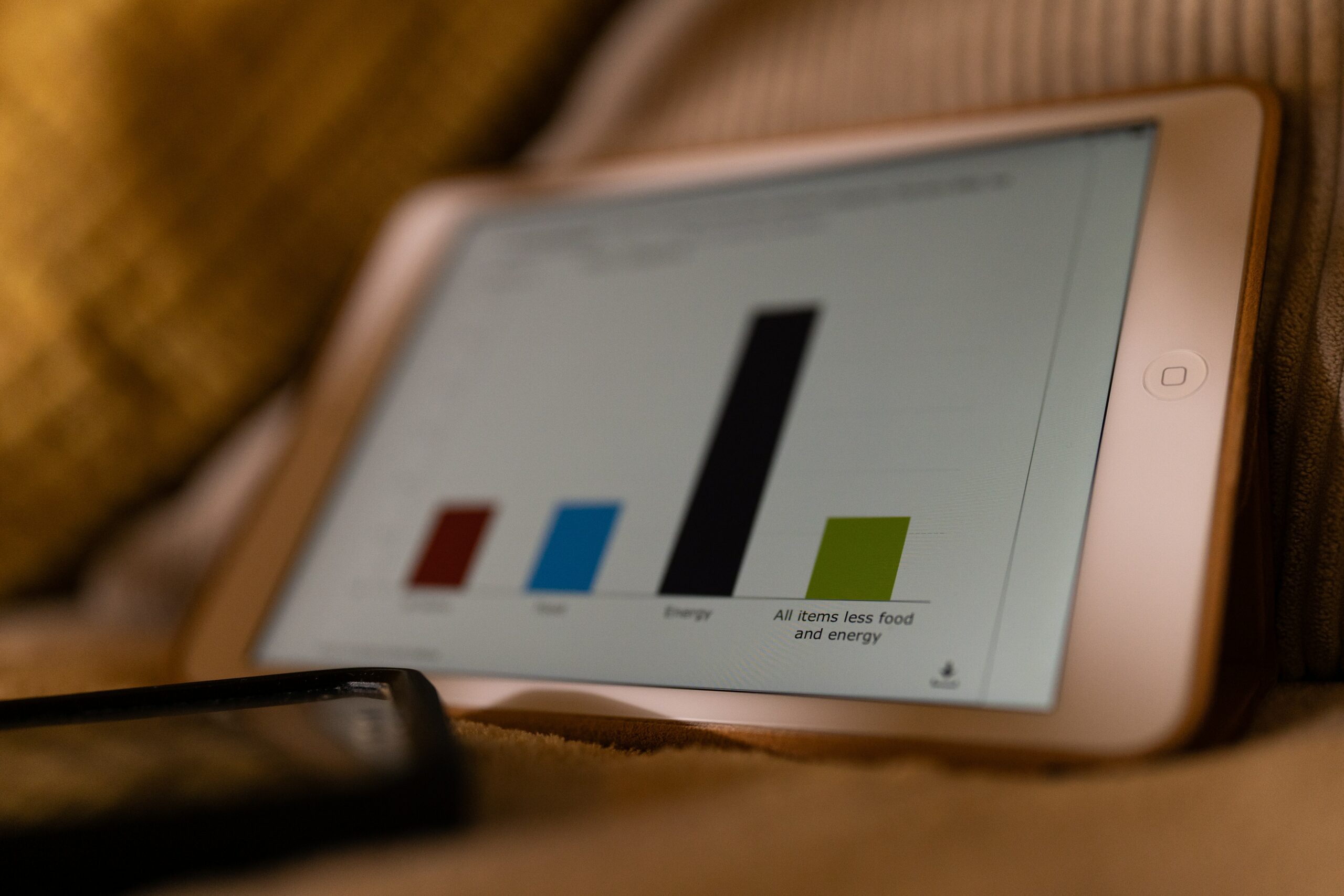The monthly change in prices paid by American consumers is tracked by the Consumer Price Index (CPI). These inflation indexes are calculated by the Bureau of Labor Statistics (BLS) as a weighted average of prices for a selection of products and services that is indicative of total consumer spending in the United States. However, over time alternative inflation indexes have been developed so as to have more perspectives on inflation rates.
Índice
Understanding the Consumer Price Index (CPI)
About 23,000 retail and service enterprises provide the BLS with about 80,000 prices each month. The more comprehensive and frequently referenced of the two inflation indexes derived from the data covers 93% of the U.S. population, despite the fact that both contain the word “urban” in their titles.
A study of the rental rates for 50,000 dwelling units, which is used to determine the increase in rental prices as well as owners’ equivalents, forms the basis of the shelter category prices, which make up a third of the overall CPI.
To accurately depict the proportion of consumer spending that goes toward housing costs, the owners’ equivalent category mimics the rent equivalent for owner-occupied homes. While income taxes and the costs of investments like stocks, bonds, or life insurance policies are excluded from the CPI, user fees and sales or excise taxes are included.
The calculation of the inflation indexes from the data factors in substitution effects—consumers’ tendency to shift spending away from products and categories has grown relatively more expensive.
It also adjusts price data for changes in product quality and features. The weighting of the product and service categories in the CPI indexes corresponds to recent consumer spending patterns derived from a separate survey.
Types of Consumer Price Indexes (CPIs)
Every month, the BLS releases two indices. 93% of Americans who do not reside in distant rural areas are represented by the Consumer Price Index for All Urban Consumers (CPI-U). It does not include expenditure by residents of institutions, farms, or military bases. The highly publicized CPI figures that are significant to financial markets are based on CPI-U.
The Consumer Price Index for Urban Wage Earners and Clerical Workers (CPI-W) is another index that the BLS releases. 29% of Americans who live in households where the primary source of income is clerical work or hourly employment are covered by the CPI-W.
Social Security payouts, along with other government benefits and pensions, are adjusted for changes in the cost of living using the CPI-W. In order to prevent taxpayers from being liable to a higher marginal rate as a result of inflation, it also moves the federal income tax brackets.
Consumer Price Index (CPI) Categories
The monthly CPI report from the BLS includes both the unadjusted change from the previous year for the overall CPI-U as well as its important subcategories. Price variations for a range of goods and services are displayed in the BLS detailed tables by eight general spending categories.
Prices for everything from tomatoes and salad dressing to auto repairs and sports tickets are estimated in the subcategories. Each subcategory’s price change is shown both with and without a seasonal adjustment.
The BLS also releases CPI information for U.S. regions, sub-regions, and significant metropolitan areas in addition to the national CPI indexes. The metro data is useful mostly for identifying price variations depending on local circumstances but is vulnerable to wider volatility.
The allocation of the eight primary expense categories according to the CPI basket weighting is shown in the table below. Be aware that some subcategories within their main categories could be challenging to identify. Automobiles fall under the category of commodities, for instance.
| CPI Categories by Weight as of July 2023 | |
|---|---|
| Group | Weight |
| Housing | 34.7% |
| Food | 13.4% |
| Transportation | 5.9% |
| Commodities | 21.3% |
| Health Care | 6.4% |
| Energy | 7.0% |
| Education | 4.8% |
| Other Expenses | 6.5% |
| Total Expenses | 100% |
How Is the Consumer Price Index (CPI) Used?
The Federal Reserve and other participants in the financial market frequently use the CPI to calibrate their monetary policies and monitor inflation. The CPI is used by both businesses and consumers to make smart financial decisions. CPI is frequently taken into consideration when negotiating salaries since it tracks changes in consumer purchasing power.
Los 6 mejores índices de inflación alternativos
Below is a list with the top 6 alternative inflation indexes available to the public.
1. Big Mac Index
En Big Mac index, developed by The Economist magazine in 1986, uses the price of a McDonald’s Big Mac as the benchmark to compare purchasing power parity (PPP) between countries.
According to the economic idea of “purchasing power parity,” exchange rates should eventually trend toward being equal across national borders in terms of the price charged for an equivalent basket of commodities. The product in question is a Big Mac.
This inflation index’s theory states that any change in the value of a currency should be reflected in the price of a basket of products.
One of this alternative inflation indexes most important findings is that a basket of items in one country is rarely exactly replicable in another. An American grocery basket and a Japanese grocery basket, for instance, are likely to contain significantly different things. However, a Big Mac will always be a Big Mac, notwithstanding minor regional variations in the components.
It has emerged as one of the alternative inflation indexes that has emerged as a universal benchmark for cost comparison. For instance, Statistica.com utilizes it to measure local purchasing power globally, demonstrating that although consumers in Azerbaijan, Egypt, and Moldova are getting a deal on a Big Mac, the price is quite high in Switzerland.
Example of the Big Mac Index
According to The Economist’s analysis of the alternative inflation index in January 2019, the British pound was 27% undervalued when compared to the US dollar. That means, a Big Mac back then cost $5.58 in the United States and 3.19 pounds in the United Kingdom. Although the indicated exchange rate resulting from this disparity is 0.57%, the actual exchange rate at the time was 0.78%.
As most of the other alternative inflation indexes, it is not a perfect tool, as The Economist editors have been quick to point out. One example is that, out of 195 nations, McDonald’s only has locations in 118 as of 2021.
Therefore, we are unable to examine the PPP between the U.S. dollar and other currencies like the Icelandic krona or the Bolivian boliviano using this methodology.
However, as the price of a Big Mac, like most consumer goods, must account for local prices of raw materials, labor, taxes, and business premises, economists believe the index to be a reasonably accurate real-world estimate of regional economic purchasing power.
2. Truflation
The first daily, unbiased, real-market inflation and economic data are collected, calculated, and published by Truflation. Additionally, they make their data accessible on-chain using the Chainlink architecture, making it possible for other DeFi devices and Web3 apps to directly use them.
This alternative inflation index’s goal is to enable a new generation of blockchain goods by providing the most unbiased, decentralized, and up-to-date economic and financial information alternative in the form of on-chain price indexes.
The BLS has come under fire from economists, academics, and investors over the years for maintaining inflation indexes that are too low and too smoothed to accurately reflect consumer market prices. Despite the 30-year high inflation rate (6.5% as of December 2022), many staples saw large price increases, contributing to the global challenge of rising living costs.
There are various causes for the gap between reported inflation and consumer-experienced price rises, among them a general lack of awareness of what inflation is, how it is measured, and how it is presented to the public.
This alternative inflation index’s compounding impacts play a role in it. Each year, inflation increases and is purposely maintained at a positive rate by the Fed. With the exception of times of major global crises, prices are always rising and hardly ever falling because the baseline for inflation is 2%.
3. Chapwood Index
En Chapwood Index accurately captures the rise in American cost of living. This alternative inflation index, developed by financial advisor and wealth manager Ed Butowsky, tackles alleged flaws in the CPI’s depiction of rising expenses.
Contrary to the CPI, which frequently falls short of accurately reflecting consumer spending patterns, this is one of the alternative inflation indexes that adopts a more specialized approach by examining price data for a wide range of goods and services.
It is updated and published twice a year, and it lists the top 500 things that Americans spend their after-tax income on in the 50 major American cities, along with their unadjusted real cost and price variation.
This is one of the alternative inflation indexes that is a standout non-governmental indicator that presents an alternative viewpoint on inflation that many Americans find compelling.
En Chapwood Index operates as follows:
Item Selection: This alternative inflation indexes developers initially gathered information on more than 4,000 things that people frequently spend money on in their daily lives. The top 500 most commonly used items were selected from this list.
Price Monitoring: Every three months, the costs of these 500 items are monitored. This tracking aims to record the actual changes in pricing over time and is carried out without prejudice or manipulation.
Weighted Index: A weighted index is computed using the prices. This means that the index calculation gives more weight to goods that are consumed more frequently or have a greater impact on everyday living.
Comprehensive Coverage: Unlike the CPI, this is one of the alternative inflation indexes that takes into account a wide range of goods that the majority of Americans typically consume. This covers not only necessities but also extras including services, taxes, energy expenditures, and food costs.
Geographical Variations: This is one of the inflation indexes that can be tailored for particular metropolitan regions to take into account regional variations in cost of living.
Reporting and Comparison: This is one of the inflation indexes that offers an easy-to-understand comparison of pricing variations over time. When compared to the CPI, this can aid both individuals and scholars in understanding how prices for common goods are changing.
This alternative inflation index tracks a somewhat smaller and more focused range of products than the CPI does, and it contains factors that are frequently left out of the CPI calculation. This is the main difference between the two indices.
This is one of the inflation indexes that attempts to give a more accurate picture of how prices are changing in people’s everyday lives, assisting people in understanding their financial conditions and aiding them in making more intelligent decisions.
Over the course of two years, they gathered more than 4,000 items from friends and associates around the nation on the things they purchase on a daily basis for the Chapwood Index. The top 500 things that were most frequently used were then selected from the list. The price growth of these 500 items is then tracked and observed without prejudice or manipulation.
They then determine an increase or decrease by using the exact pricing for the same item each quarter. Basically everything that the majority of Americans consume on a daily basis is included in this list.
List of items in the index
- BAGELS
- STARBUCKS COFFEE
- ADVIL
- CAR WASHES
- PIZZA
- TOLLS
- TAXES
- PEOPLE MAGAZINE
- GASOLINE
- FAST FOOD RESTAURANTS
- GYM MEMBERSHIPS
- HOME REPAIRS
- PIANO LESSONS
- LAUNDRY DETERGENT
- LIGHT BULBS
- UNDERWEAR
- COMPUTER PAPER
- TOOTHPASTE
- OIL CHANGES
- INTERNET SERVICE
- GYMBOREE LESSONS
- MOBILE PHONE SERVICE
- CABLE TV
- PET FOOD
- DRY CLEANING
- MOVIE TICKETS
- TOOTHPASTE
- HAIRSPRAY
- SCHOOL SUPPLIES
Due to its strict methodology, the official CPI occasionally understates the effect of price increases on consumers, whereas this is one of the alternative inflation indexes that takes into consideration a wide range of frequently bought goods and services during certain time periods. It provides a localized, personalized measure of inflation with a focus on the 500 most commonly purchased items and services in metropolitan environments.
Traditional inflation indices are frequently criticized for their flaws, and while this is one of the alternative inflation indexes that offers a different perspective, it too is subject to criticism. Its accuracy and representatives may be questioned because it is based on data gathered by Butowsky and his colleagues. The particular goods included in the index might also not fully represent the purchasing patterns of all families.
This is one of the inflation indexes that offers a wise option for those who believe that the official inflation estimates do not accurately reflect their realities. It offers a new viewpoint on price fluctuations in various places and appeals to people and investors who are dubious of conventional inflation data.
As one of the alternative inflation indexes, it is essentially a special alternative that offers a different perspective on inflation and caters to people who feel under-served by conventional metrics. It aims to expose the real cost-of-living increases that typical American households have experienced. Although it isn’t widely accepted, it provides insightful information on pricing changes that appeals to a sophisticated audience.
4. Shadow Stats
ShadowStats publishes “alternative” measures of inflation while pretending to do so by using the same techniques that the statistics bureau previously used, i.e., by denying that we currently consume a variety of goods and services and that an iPhone combines a wide range of goods that in 1980 were out of reach for kings and presidents. It specifically states that it uses the techniques used by the bureau in 1980 and 1990.
Reconstructing current-day inflation in that manner may seem difficult, but there is a simple solution. It appears that one must increase the inflation rate by about 3.75 percentage points in order to construct the 1990-based alternate. It appears that to construct the 1980-based alternative inflation index, one multiplies the inflation rate by an increasing number, where the amount is roughly equal to the number of years since 1980, divided by 34. That is because it is arbitrary whether it sounds like that.
Shadowstats’ alternate inflation numbers are likely its best-known feature. Williams claims that between 1997 and 1999, the Consumer Price Index saw significant changes as a result of contentious modifications made by Alan Greenspan, including “hedonic regression,” or the rise in product quality.
This was done in an effort to cut Social Security expenditures. Williams’ opinions have been shared by certain other investors, most notably Bill Gross, who allegedly referred to the US CPI as a “haute con job.” Williams’ errors about the CPI were addressed in a report written by staff economists at the US Bureau of Labor Statistics, John S. Greenlees and Robert B. McClelland.
Williams has called the official figures for U.S. Gross Domestic Product (GDP) and jobs growth range as “deceptive”, “rigged”, and “manipulated”, and Shadowstats likewise tracks alternative growth data. Numerous economists and financial professionals have argued that the Shadowstats CPI is fundamentally flawed and that its application results in illogical and quickly refutable conclusions.
In response to earlier criticisms from economist James Hamilton, John Williams clarified in a private phone call that Shadowstats simply adds a constant to the publicly stated statistics rather than recalculating BLS data.
This alternate inflation index offers different perspectives on price movements and can be valuable tools for assessing the impact of inflation on various segments of the economy. It’s important to note that each index has its strengths and limitations, and the choice of which one to use depends on the specific context and objectives of the analysis.
5. Producer Price Index (PPI)
The average change over time in the prices domestic producers are paid for their output is measured by the Producer Price Index (PPI). It is an alternative inflation index that calculates wholesale inflation based on hundreds of producer pricing indexes broken down by sector and product type. Every month, the U.S. Bureau of Labor Statistics (BLS) releases the index. The PPI is distinct from the consumer pricing index (CPI), which tracks changes in consumer spending on goods and services.
The study includes data on 69% of the value of services provided and all of the United States’ output of commodities. To determine the overall change in producer prices, its component product and services indices are weighted according to the amount of output produced by each category.
The PPI and its component industry and product indexes are released by the BLS during the second week of the month after the reference date of the survey. It is based on more than 25,000 producer firms that willingly submitted 100,000 monthly price quotes online in total.
Based on the costs of important inputs, the alternative inflation index is used to estimate inflation and to determine how to implement escalator provisions in private contracts. It is essential for comparing wholesale and retail price trends as well as tracking price changes by industry.
6. Penn State/ACY Alternative Inflation Index
En Marginal Rent Index, which reflects a distinct measure of changes in house prices based on marginal rents, is a component of the Penn State/ACY Alternative Inflation Index, which was initially introduced in the research article by Brent Ambrose, Ed Coulson, and Jiro Yoshida.
This alternative inflation index is used to replace the rental price of both tenant- and owner-occupied dwellings when constructing the Penn State/ACY Alternative Inflation Index. According to inflation estimates, housing rentals might range from 16% to 42% in relative importance. The Repeat Rent Index (RRI), first introduced by Ambrose, Coulson, and Yoshida (2015), is expanded upon by the MRI.
The Real Capital Analytics (RCA) Commercial Property Price Index (CPPI) is multiplied by the typical RCA capitalization (or cap) rates for apartments to produce the quality-adjusted net rent index (NRI), which forms the basis of the monthly MRI. The NRI is what apartment investors refer to as “net operating incomes” (NOI).
Gross rental income less property-level operating expenses such property taxes, management fees, and maintenance charges is known as NOI. The NRI has several benefits over other rent measures, including being a forward-looking net rent measure, being based on arm’s-length market transactions, being based on a repeat-sale index, including a consistent rent type (net rent), and being updated monthly. In order to create the MRI, the Repeat Rent Index (RRI) is imitated.
This alternative inflation index basically accounts for how slowly rent moves, which is a fair approach to track inflation. Although it isn’t actually comparable to the official metric, there is a case to be made that it more accurately captures the current state of affairs.
Preguntas frecuentes - FAQ
What are alternate inflation indexes?
Alternate inflation indexes are alternative measures to the Consumer Price Index (CPI) that economists and policymakers use to track changes in the general price level of goods and services over time. These indexes provide different perspectives on inflation by considering various aspects of price movements.
Why are alternate inflation indexes important?
Alternate inflation indexes offer a more nuanced view of inflation by considering factors like substitution effects, production costs, and changes in consumption patterns. Alternative inflation indexes often provide insights into how different economic factors impact price changes and help policymakers make more informed decisions.
Which alternative inflation index is best for measuring inflation?
The choice of which alternative inflation index to use depends on the specific context and objectives of the analysis. Each index has its strengths and limitations. Economists often use multiple indexes to gain a comprehensive understanding of inflation dynamics.
Can alternate inflation indexes predict future inflation?
While no index can predict future inflation with certainty, some alternative inflation indexes provide insights into potential inflation trends. Early changes in production costs or adjustments for consumer behavior can offer indications of possible future price movements.









